One of the crown jewels of Seville, Triana is a vibrant neighborhood on the banks of the Guadalquivir River with a separate identity from the old town across the bridge. In fact, the residents of Triana will say they are from Triana, not Seville as they consider it a completely different city. It has a long tradition of artisanry, with its tile and pottery industry, as well as being the home of flamenco in Seville. In short, Triana is where a lot of what we consider to be essential Seville was born.
This Triana guide will give you the rundown on the history, places to visit, and where to stop for a bite or a drink to help you make the most of your exploration of this wonderful corner of Seville.
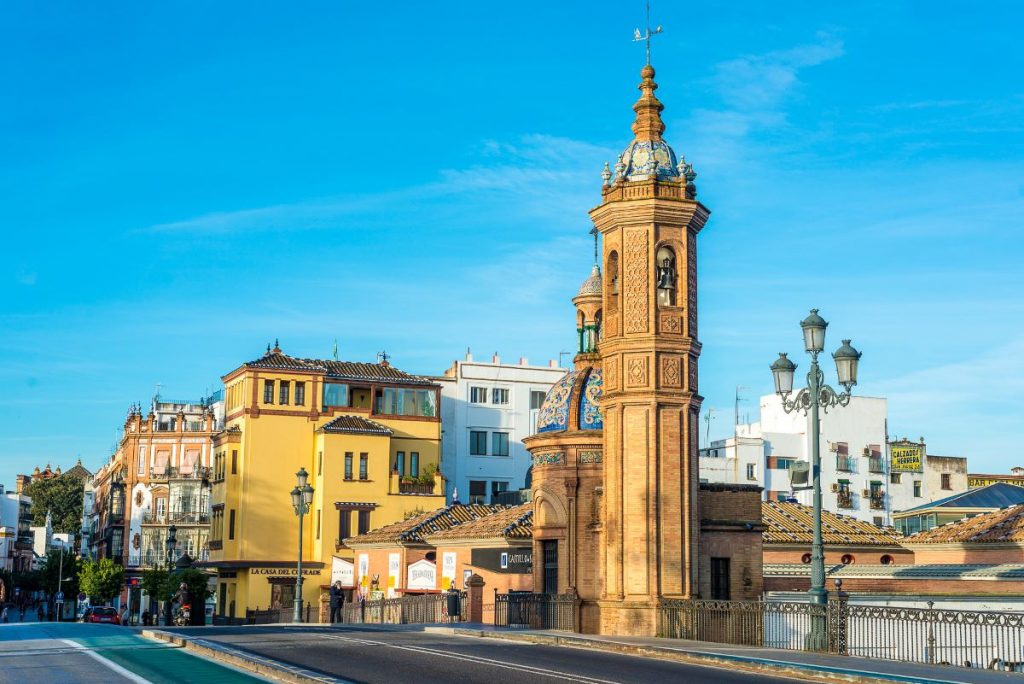
History of Triana
The history of Triana dates back over 2,500 years to the Tartessian era. Later, the Romans built a strategically important settlement here to link Hispalis (ancient Seville) to Italica ( a Roman city about 30 mins outside Seville by bus and well worth a visit if you have the time). Under Islamic rule, the first bridge linking what would become Triana to the future Seville was built. But there is little that remains from this period as the citadel was destroyed during the reconquest in 1248.
Jumping forward again, Triana was known for its seafaring links. Thanks to Christopher Columbus, whose tomb you can see in Seville’s cathedral, Seville became one of the richest and most important cities in Europe for exploration and trade. Triana established a University of Seafarers which provided sailors who were involved in Magellan and Elcano’s famous circumnavigation of the world. In fact, in Plaza del Cuba, there is a sphere which marks mile zero of the first round-the-world voyage.
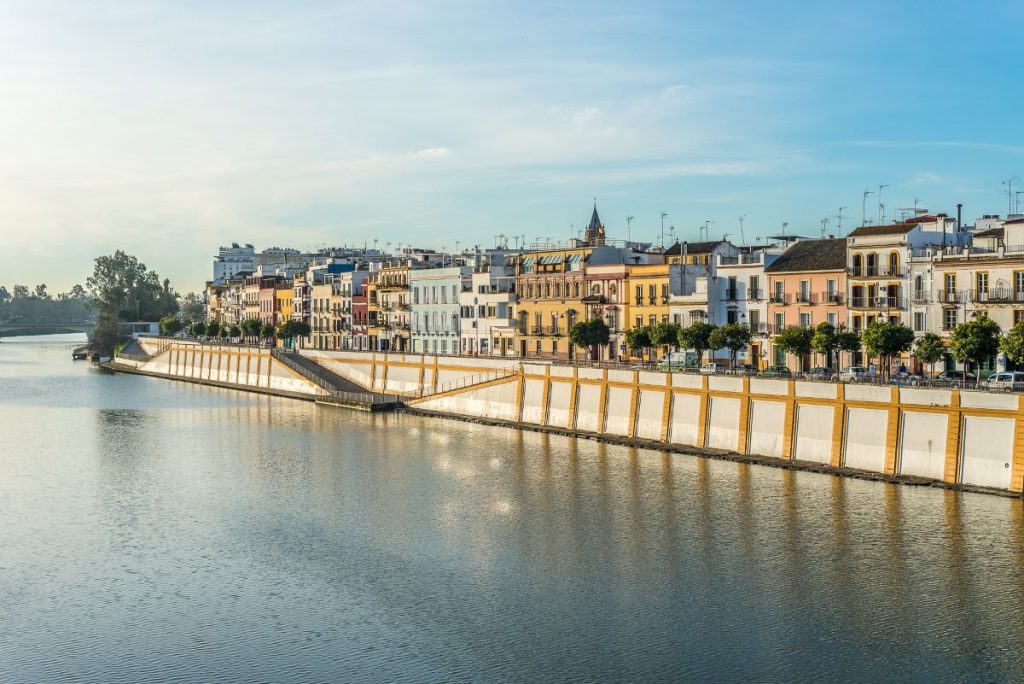
Flamenco and Bullfighting
Triana is the traditional home to both flamenco and bullfighters. The modern style of bullfighting, pulling the bull close to the matador instead of staying far away to avoid the horns, was actually introduced by a Trianero called Juan Belmonte in the early 20th Century. But he was far from the first matador from the area. In fact, the link between bullfighting and Triana is strong, with many streets named after famous toreros who were born in this neighborhood, which faces the bullring on the opposite side of the river bank.
Triana is considered the spiritual home of flamenco in Seville, and some of the most authentic and real flamenco can still be found in the area, late at night in small, local bars. In the 1950s, a lot of the Roma community were moved out of Triana to make way for new, modern developments, but some traditional corrales de vecinos,—traditional communal living quarters centred around a courtyard,—can still be found dotted around the neighborhood as a reminder of the community which used to call the area home.
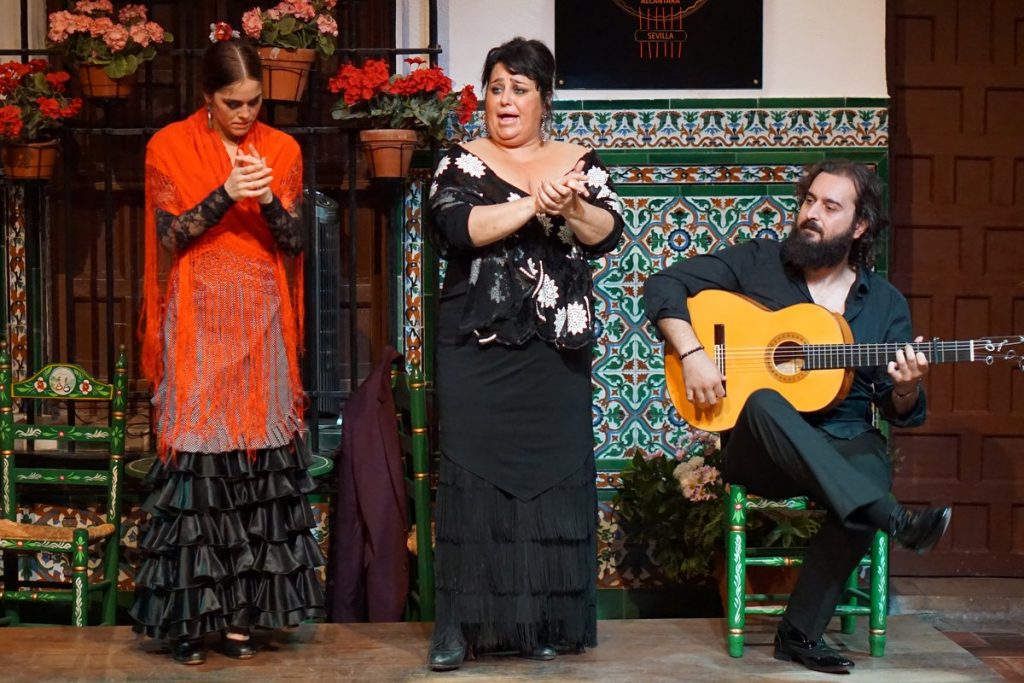
Artisanry in Triana
No matter where you look in Seville, you cannot escape the city’s intricate and beautifully designed tiles. For some incredible examples, look no further than the Plaza de España, which is encrusted with these hand-crafted pieces.
Most of the ornate tiles you see decorating hotels, churches, and walls along the streets during your wanderings around Seville will have been produced in Triana. These tiles, called azulejos (from the Arabic meaning “polished stone”) have been made in the area since Roman times and have become a symbol of the city. Take a trip to one of the surviving ceramics workshops to buy an authentic souvenir from your time in Seville.
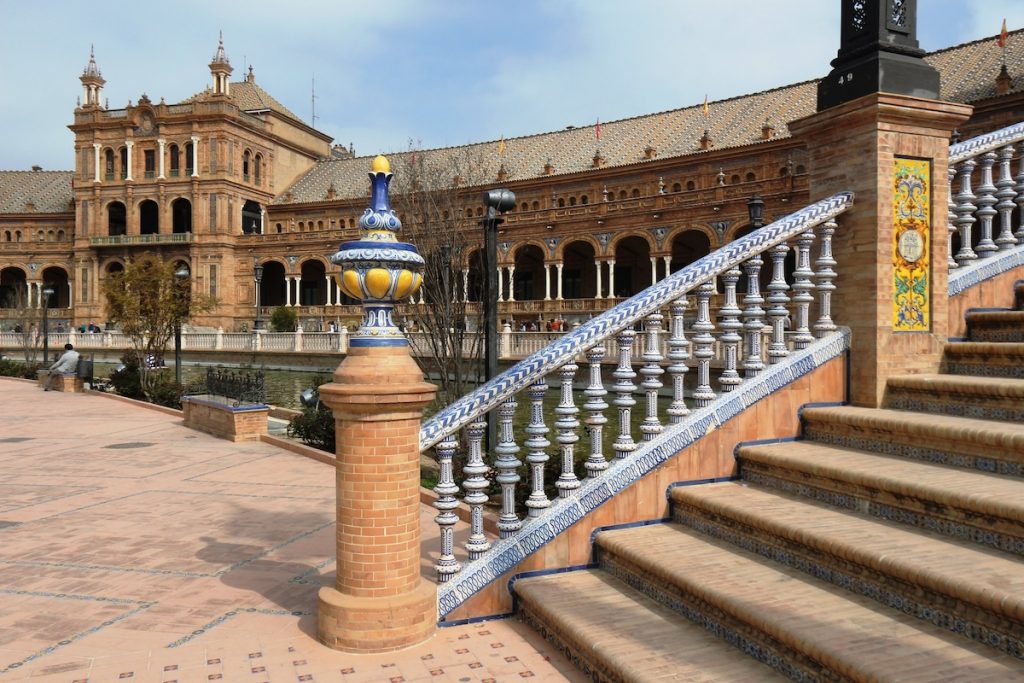
Must-Visit Places in Triana
It can be hard to know where to start with exploring a new area, but here are some key locations that can’t be missed on your travels around the district.
Puente de Isabel II (Triana bridge)
To visit Triana, first you need to get there. Serving as a gateway to the neighborhood, the Triana bridge was completed in the mid 19th century and was declared a national historic monument in 1976. Pause as you cross the river to marvel at the magnificent views of the city, which are especially impressive at sunset.
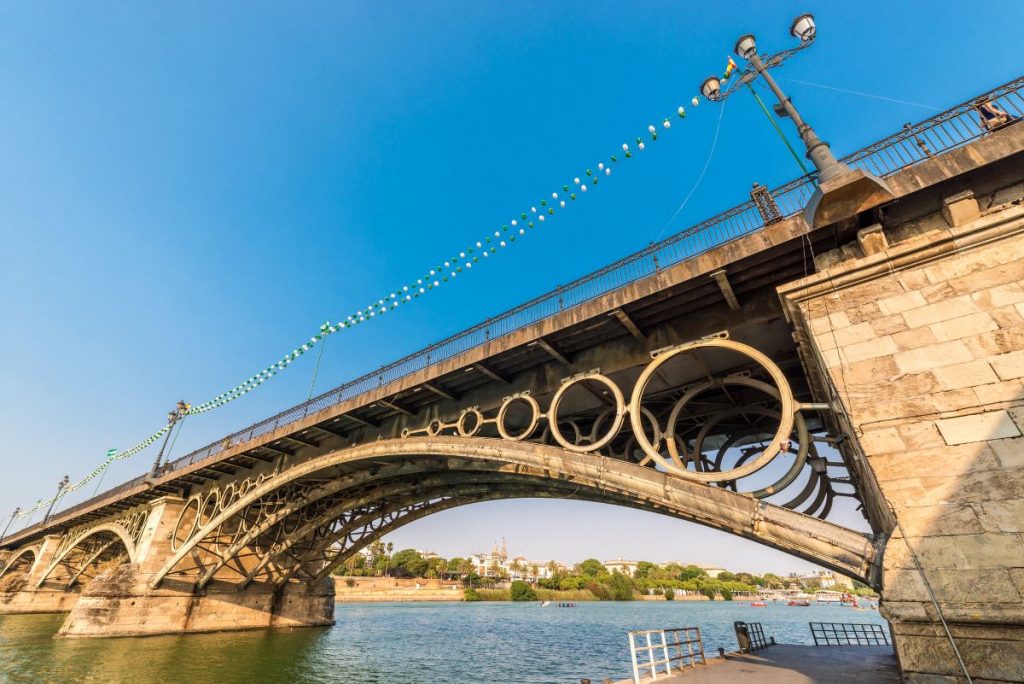
Plaza del Altozano
This small plaza by the bridge gives you a taste of what Triana has to offer. Surrounded by bustling bars, this plaza is home to two statues that tell the history of Triana. This first statue is a flamenco dancer called Monumento al Arte Flamenco, the Monument to the Art of Flamenco. The dancer is depicted with an anvil and a guitar, which represent the basic elements of flamenco: singing, dancing, and el toque, the specific flamenco guitar technique.
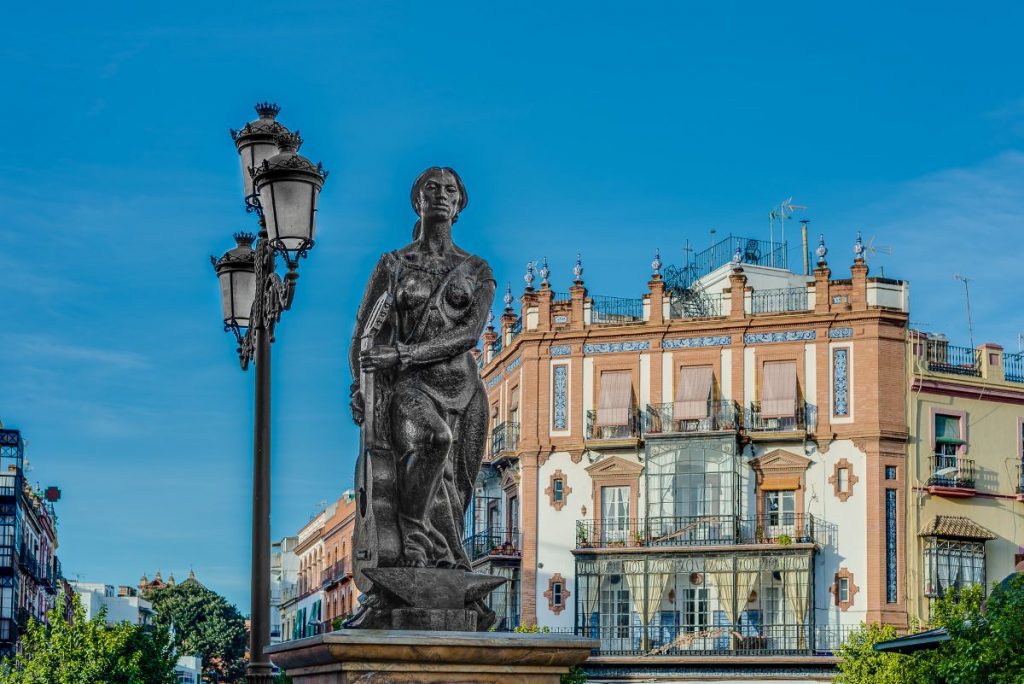
The second statue in this square is of Juan Belmonte, the torero mentioned earlier for changing the style of bullfighting. He looks out across the river towards the Real Maestranza, the famous Seville bullring where he used to display his skills.
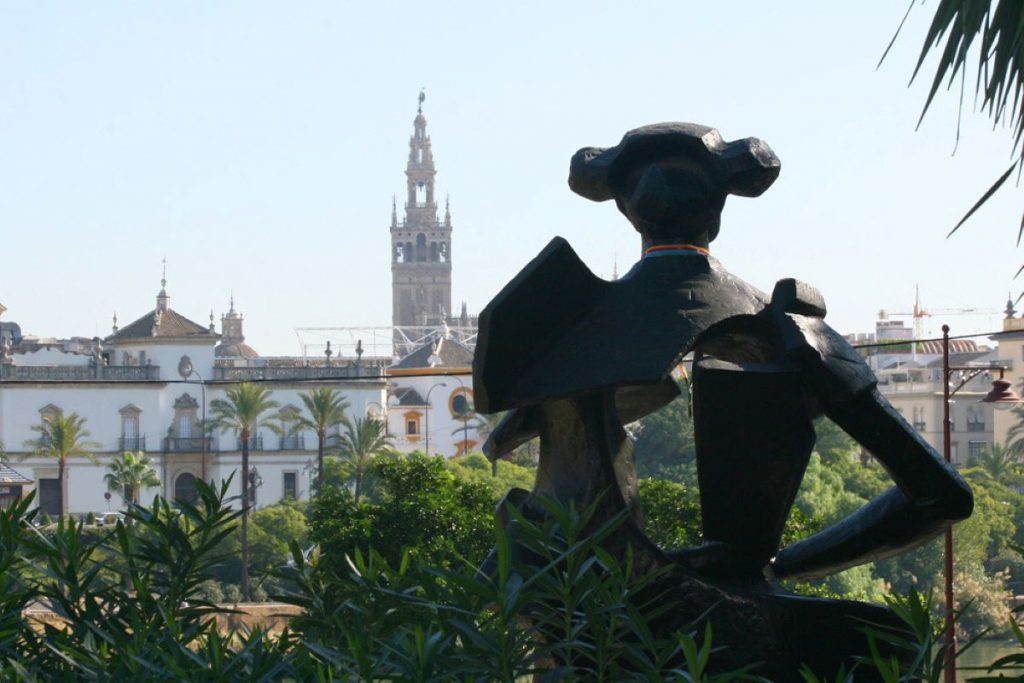
Corral de las Flores
Location: C. Castilla, 16
Take a step back in time and see how the residents of Triana used to live. This corral de vecinos named after the plants and flowers which adorn the entrance, is one of the oldest remaining in Seville and one of the most unchanged. Wander through and admire the locally made tiles. This little gem even contains the original well and outside washing stations which provide an insight into the everyday lives of the original residents.
Mercado del Paseo del Arte
Location: El Paseo de la O, under the triana bridge, access via calle Betis
For art lovers or those looking for a unique memento from their trip, this artisan market is well worth a look. Held every weekend, on Saturday and Sunday mornings, this market is organised by the Association of Painters and Other Arts, and showcases the work of its members. Here you can find ceramics, pottery, and paintings amongst other handmade items for sale, guaranteed to be made by artisans of Seville. What better way to commemorate your visit to the ancient neighborhood of craftsmen than to support their modern-day counterparts?
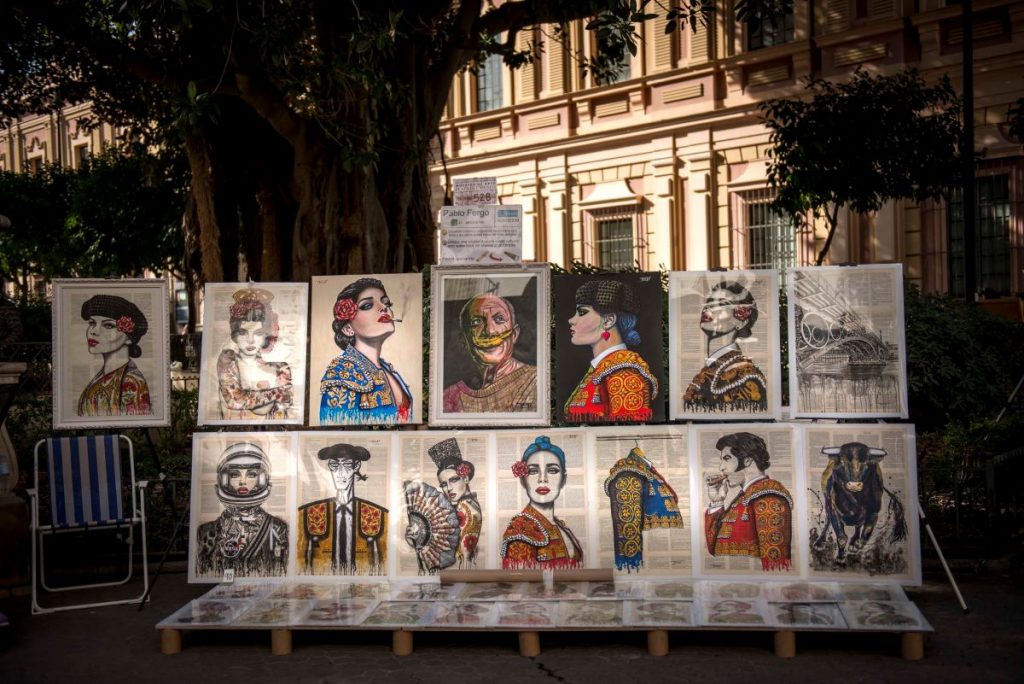
Capilla de los Marineros
Location: Address:Calle Pureza, 53
Home to one of the most revered statues of the Virgin Mary, this church should be on anyone’s list of places to see. Originally the chapel of the University of Seafarers, it has undergone a lot of changes throughout the years. The chapel is home to the Virgen de La Esperanza, in competition with La Virgen de la Esperanza de Macarena for the most beloved virgin in Seville, they both leave on their procession of the city at the same time. To find out more about Semana Santa and its significance to the people of Seville, the museum in the Capilla de los Marineros proves an enlightening experience.
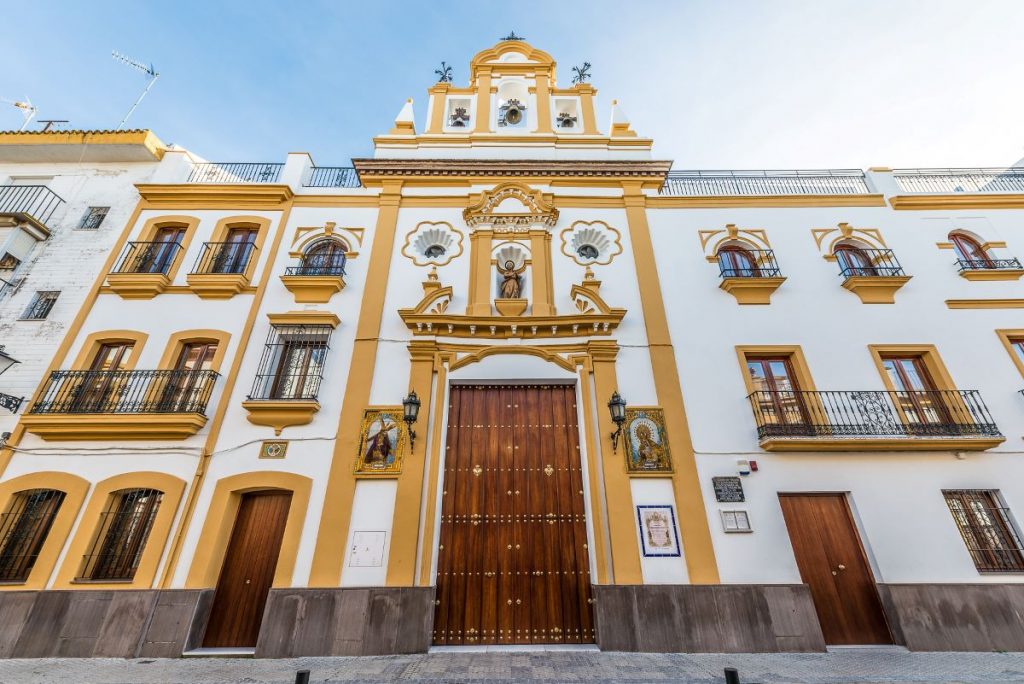
Centro Cerámica de Triana
Location: Address: C/ Callao, 16
Triana was the center of the tile and pottery industry of Seville for centuries, and the products made here are displayed all over the city. Situated in the old Santa Ana factory, the museum features two floors. On the ground floor you can explore the historical methods of making ceramics through the artefacts housed there, while the upper floor offers permanent and temporary exhibits, including pieces designed by the architect of plaza de España Aníbal González. Head next door to Cerámica Triana to buy your own piece of Triana tile and pottery.
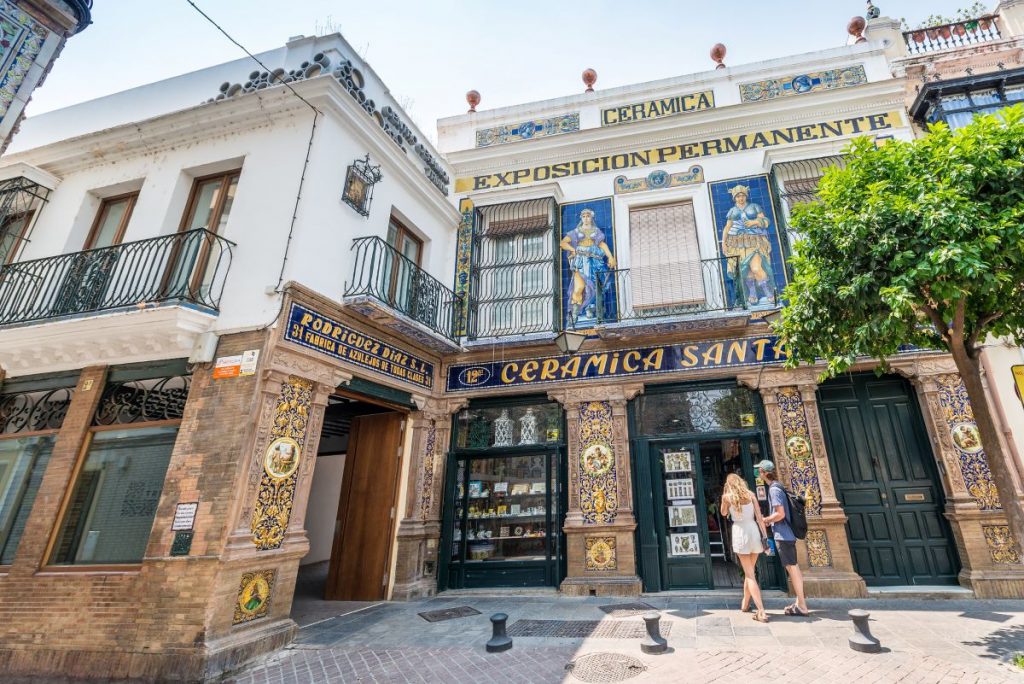
Where to Eat and Drink in Triana
Whether you are looking for breakfast, lunch, or dinner, or just a spot for a snack, here are a few of our suggestions for places to relax and enjoy a bite.
Calle Betis
Named after the Roman name for the Guadalquivir, this street overlooking the river offers unparalleled views of the waterfront and the key monuments of Seville. Filled with lively bars and restaurants, take your time and enjoy sobremesa (time relaxing after a meal to chat) with some of the best views of the city.
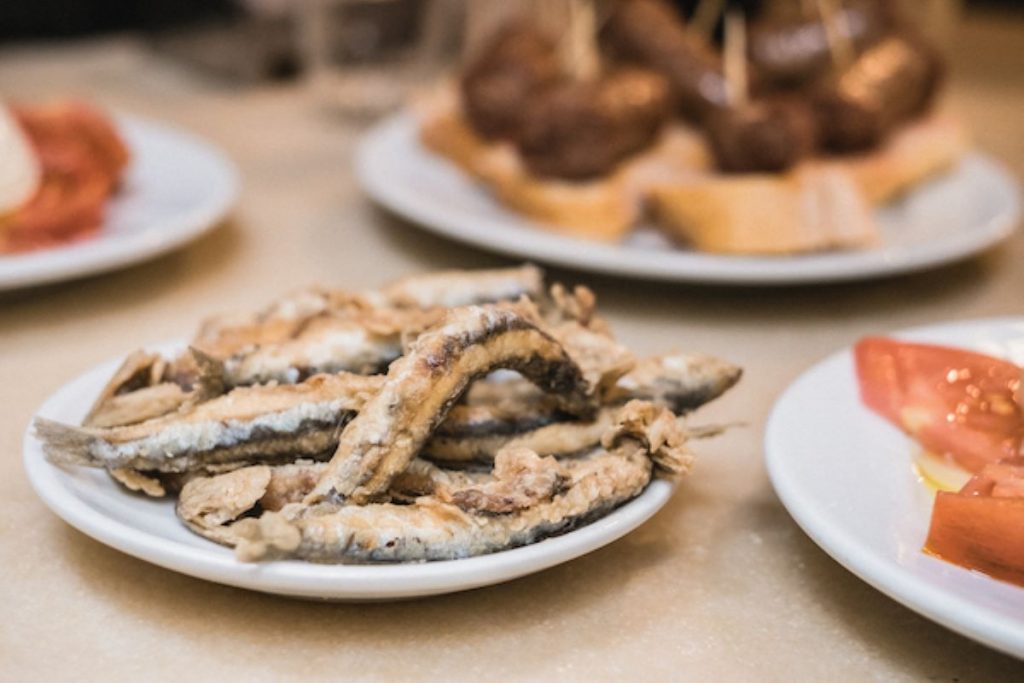
Mercado de Triana
Location: c/ Plaza del Altozano s/n
If you want variety and a traditional tapas experience, look no further than Triana Market. This market has been a cornerstone of life in Triana since its founding over 200 years ago. From bakeries and ham to bars and restaurants, this vibrant market is a great place to start off your evening in Triana, or a fantastic spot for lunch after a morning of exploring.
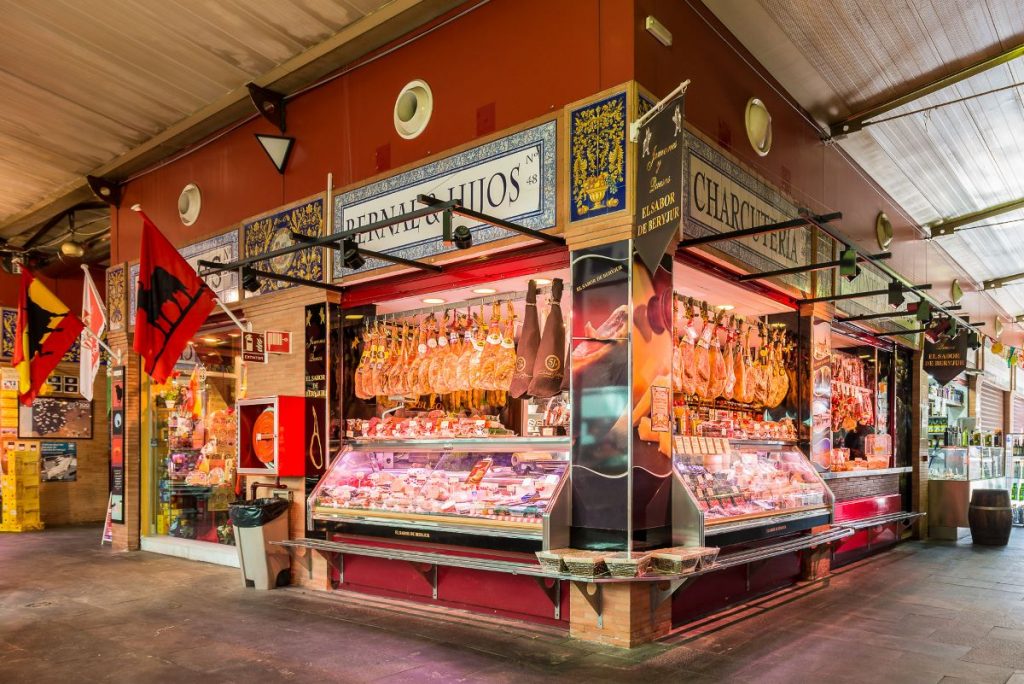
Bar Santa Ana
Location: c/ Pureza 82
Known as the Semana Santa bar, this impressive bar is where visitors can soak up the magic of this very Sevilliano festival all year round. We recommend the vermouth and a tapa of payoyo cheese, a cured goats cheese only produced in the nearby Cádiz mountains. Bar Santa Ana is just one of the stops on our Triana tapas tour and a great spot on your very own tapas tour of the area.
Insider’s Tip: Looking for more spots to try in this neighborhood? Our friends over at Devour have you covered on all things eating and drinking in Triana!

